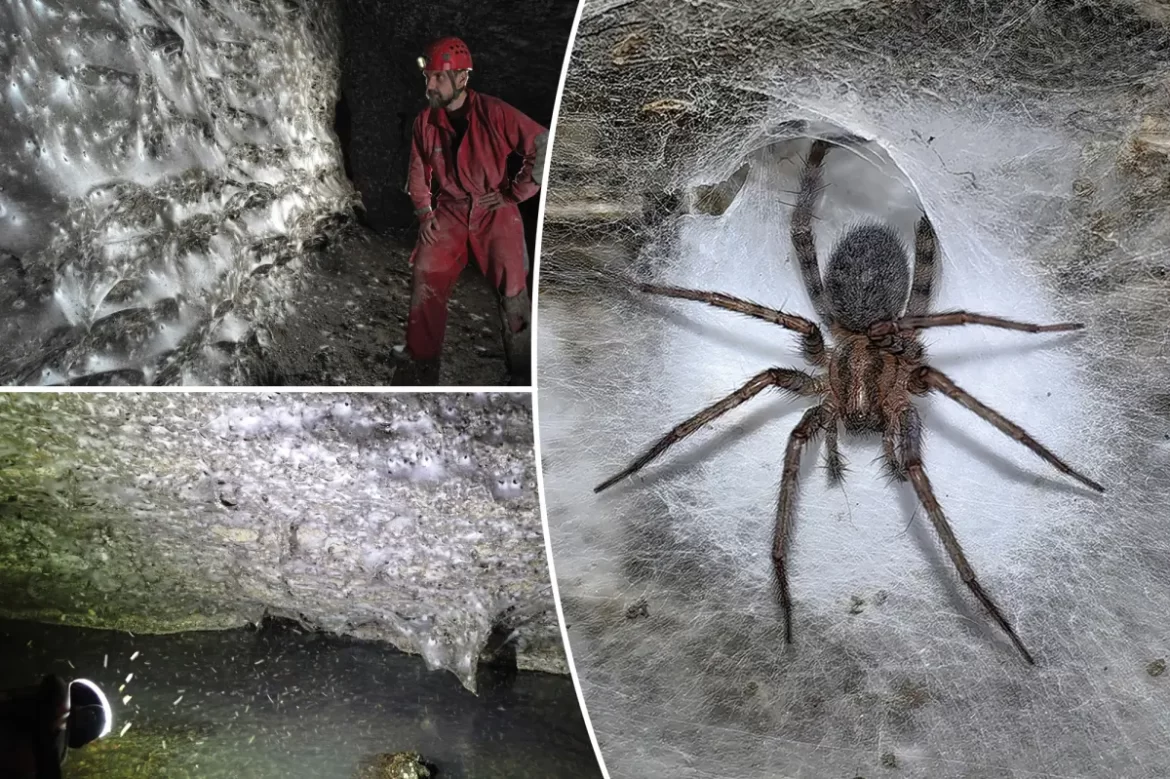Giant Spider Web Discovered Beneath Southern Europe
Scientists have discovered what is believed to be the world’s largest spider web inside a cave in southern Europe. According to research published in the journal Subterranean Biology, the massive web was woven by more than 111,000 spiders working together inside the Cave of Sulphur, located near the border between Greece and Albania.
The web covers an area of approximately 106 square metres — roughly the size of a small apartment — and is made up of thousands of interconnected funnel-shaped structures. Researchers describe it as a complex, multilayered network that demonstrates an unusual level of cooperation among spider species.
Two Rival Spider Species Working Together
What makes this discovery remarkable is that the web was built jointly by two different types of house spiders. Normally, these species are predatory rivals, with one often preying on the other.
However, scientists believe the absence of light inside the cave has altered their usual behaviour. In the pitch-black environment, the spiders do not recognize one another as threats. Instead, they coexist peacefully, weaving side by side to build a shared web.
This unexpected cooperation challenges assumptions about spider behaviour, which is typically solitary and territorial.
Life Sustained by Sulphur-Producing Bacteria
Researchers also found that both spider species feed on tiny flies living on sulphur-producing bacterial layers coating the cave’s inner walls. These bacteria form part of a unique underground ecosystem, allowing life to thrive in complete darkness.
The Cave of Sulphur has long fascinated biologists for its extreme environment — rich in minerals but poor in light and oxygen. This latest finding further highlights the adaptability of life in subterranean habitats.
A Window into Evolution and Cooperation
Experts say the discovery could provide new insights into biological evolution and the social behaviour of spiders. Cooperative web-building on this scale has never been documented before in natural conditions.
Dr. Eleni Papadopoulos, one of the study’s authors, noted that understanding how rival species collaborate in such an environment may reshape our understanding of animal adaptation and survival.
The discovery underscores how even in the darkest, most isolated places on Earth, life continues to innovate and adapt in extraordinary ways.















